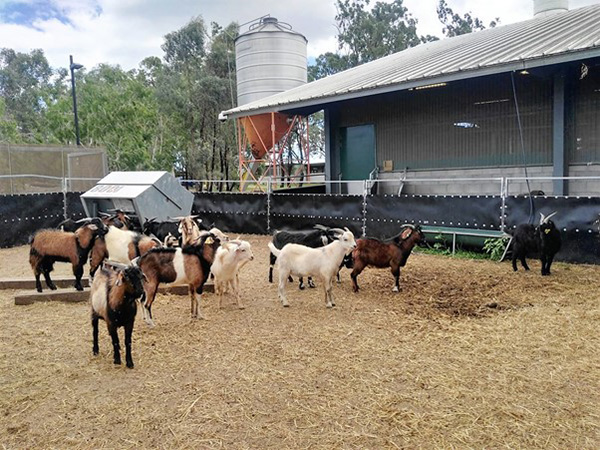
Cost-of-supplement calculator on the way
Key points
- Cost-of-supplement calculator is an easy-to-use Excel-based tool
- Designed to help Rangeland goat producers assess the relative costs of the various supplements
- With goatmeat prices at near historical highs, provision of supplements to increase liveweight gain of goats managed behind exclusion fences may be a viable option.
Rangeland goat producers considering supplementary feeding will soon have access to a new cost-of-supplement calculator to help make more informed decisions.
Funded by Meat & Livestock Australia (MLA) and developed specifically for the goat industry, the cost-of-supplement calculator is an easy-to-use, Excel-based tool.
It has undergone a testing phase and is now being refined before it is released to the industry.
The calculator has been developed as part of an extensive research and development (R&D) project to determine the responses of young Rangeland bucks to feed supplementation, undertaken by The University of Queensland (UQ).
Project lead, Simon Quigley, said the calculator would allow producers to input locally relevant price information for a range of supplements, as well as starting liveweights, and target liveweights or liveweight gains of their goats.
“Producers can assess the relative costs of the various supplements to reach target liveweights on a cents per day basis, and total cost and time to reach a target liveweight basis,” Simon said.
“The relative cost-of-supplement calculator demonstrates that the least-cost supplement may not always be the most beneficial in terms of number of days and total feed costs to achieve a target liveweight.”
“The decisions producers make are likely to be based on local and seasonal availability of the supplement and costs, including freight. The calculator will assist them to make more informed decisions on the relative costs of various supplements.”
Why supplement goats?
Traditionally, Rangeland goats have been raised on native vegetation with little or no access to improved forages or supplements, which may result in slow and inconsistent growth rates of young goats targeted for slaughter.
With goatmeat prices at near historical highs, investment in alternative management practices including the provision of supplements and improved forages to increase liveweight gain of goats managed behind exclusion fences may be a viable option for Rangeland goat producers.
In research conducted by UQ, young entire male Rangeland goats fed dry season Mitchell grass hay alone essentially maintained liveweight.
“These animals will not meet target growth rates until the quality of the available feed is increased either through a change in season or the introduction of higher quality feeds to address the nutrient deficiency in the basal diet,” Simon said.
“Liveweight gain of these goats increased as the intake of most of the supplements increased, however, the rate of liveweight gain and the maximum liveweight gain varied depending on the supplement fed.”
The cost-of-supplement calculator is anticipated to be available for producers to use in early 2022.



